#Easter cake is in dough form.
Text
I’ve been baking and doing baking-adjacent tasks for about 5h now. I’ve had enough.
#Easter bread coming in nicely (it’s done)#Easter cake is in dough form.#I just tried it and it was SO sweet oh no#I’ve been doing the same bread for about 7 years now but the cake always depends on our moods#this year I’m doing blood orange#and uhhhhh. :/. sweet?!#I have to wait for my mother to come home to discuss that. and the tin situation (we don’t have one)#(or rather - I want to use a glass one but I’m not sure how to do the flipping in there. inconvenient shape for baking paper)#also baking without snack breaks is hell. I want a little choccy. maybe a crisp.#also I’m not done after the cake.#dog has to be walked and eggs have to be hard boiled and dyed. I conveniently ignored that the whole day#also YES it’s my own fault. I got lost cleaning this morning and only started at roughly 12
1 note
·
View note
Text

[ID: Two plates of cookies, one oval and topped with powdered sugar, and the others shaped in rings; one cookie is broken in half to show a date filling; two glasses of coffee on a silver tray are in the background. End ID]
معمول فلسطيني / Ma’moul falastini (Palestinian semolina cookies)
Ma’moul (also transliterated “ma’amoul,” “maamoul” and “mamoul”) are sweet pastries made with semolina flour and stuffed with a date, walnut, or pistachio filling. The cookies are made tender and crumbly with the addition of fat in the form of olive oil, butter, or clarified butter (سمن, “samn”); delicate aromatics are added by some combination of fennel, aniseed, mahlab (محلب: ground cherry pits), mastic gum (مستكه, “mistīka”), and cinnamon.
“مَعْمُول” means “made,” “done,” “worked by hand,” or “excellently made” (it is the passive participle of the verb “عَمِلَ” “‘amila,” "to do, make, perform"). Presumably this is because each cookie is individually filled, sealed, and shaped by hand. Though patterned molds known as طوابع (“ṭawābi’,” “stamps”; singular طابع, “ṭābi’”) are sometimes used, the decorations on the surface of the cookies may also be applied by hand with the aid of a pair of small, specialized tongs (ملقط, “milqaṭ”).
Because of their laborious nature, ma’moul are usually made for feast days: they are served and shared for Eid, Easter, and Purim, a welcome reward after the Ramadan or Lenten fasts. For this reason, ma’moul are sometimes called “كَعْك العيد” (“ka’k al-’īd,” “holiday cakes”). Plates of the cookies, whether homemade or store-bought, are passed out and traded between neighbors in a practice that is part community-maintenance, part continuity of tradition, and part friendly competition. This indispensable symbol of celebration will be prepared by the women of a family even if a holiday falls around the time of a death, disaster, or war: Palestinian food writer Laila El-Haddad explains that "For years, we endured our situation by immersing ourselves in cooking, in our routines and the things we could control."
Other names for these cakes exist as well. Date ma’moul–the most common variety in Palestine–may be called كَعْك بعَجْوَة (“ka'k b'ajwa”), “cakes with date paste.” And one particular Palestinian variety of ma’moul, studded with sesame and nigella seeds and formed into a ring, are known as كَعْك أَسَاوِر (“ka'k 'asāwir”), “bracelet cakes.” The thinner dough leads to a cookie that is crisp and brown on the outside, but gives way to a soft, chewy, sweet filling.

[ID: An extreme close-up on one ka'k al-aswar, broken open to show the date filling; ma'moul and a silver teapot are very out-of-focus in the background. End ID]
History
Various sources claim that ma’moul originated in Egypt, with their ancestor, كحك (kaḥk), appearing in illustrations on Pharaonic-era tombs and temples. The more specific of these claims usually refer to “temples in ancient Thebes and Memphis,” or more particularly to the vizier Rekhmire’s tomb in Thebes, as evidencing the creation of a pastry that is related to modern kahk. One writer attests that this tomb depicts “the servants mix[ing] pure honey with butter on the fire,” then “adding the flour by mixing until obtaining a dough easy to transform into forms” before the shaped cookies were “stuffed with raisins or dried dates and honey.” Another does not mention Rekhmire, but asserts that “18th-dynasty tombs” show “how honey is mixed with butter on fire, after which flour is added, turning the substance into an easily-molded dough. These pieces are then put on slate sheets and put in the oven; others are fried in oil and butter.”
Most of these details seem to be unfounded. Hilary Wilson, summarizing the state of current research on Rekhmire’s tomb, writes that the depicted pastries were delivered as an offering to the Treasury of the Temple of Amun; that they certainly contained ground tiger nuts; that they presumably contained wheat or durum flour, since ground tiger nuts alone would not produce the moldable dough illustrated; that the liquid added to this mixture to form the dough cannot be determined, since the inscription is damaged; that the cakes produced “are clearly triangular and, when cooked are flat enough to be stacked” (any appearance that they are pyramidal or conical being a quirk of ancient Egyptian drawing); that they were shallow-fried, not cooked in an oven; and that honey and dates are depicted at the far left of the scene, but their relationship to the pastries is unclear. There is no evidence of the honey being included in the dough, or the cookies being stuffed with dates; instead, Wilson speculates that “It appears that the cooks are preparing a syrup or puree of dates and honey. It is tempting to think that the cakes or pastries were served [...] with a generous portion of syrup poured over them.” Whether there is any direct lineage between these flat, fried pastries and the stuffed, molded, and baked kahk must also be a matter of speculation. [1]
Another origin claim points to ancient Mesopotamia. James David Audlin speculates that ma’moul are "possibly" the cousins of hamantaschen, both being descended from the molded "kamānu cakes that bore the image of [YHWH’s] goddess wife Inanna [also known as Ishtar or Astarte]" that were made in modern-day Syria. Other claims for Mesopotamia cite qullupu as the inspiration: these cakes are described in the contemporary record as wheat pastries filled with dates or raisins and baked. (Food historian Nawal Nasrallah writes that these cookies, which were offered to Ishtar for the new year festival in spring, may also be an origin point for modern Iraqi كليچة, "kleicha.")
The word "määmoul" had entered the English language as a type of Syrian farina cake by 1896.
In Palestine
From its earliest instantiations, Zionist settlement in Palestine was focused on building farming infrastructure from which Palestinians could be excluded: settlers, incentivized by foreign capital, aimed at creating a separate economy based around farms, agricultural schools, communal settlements, and research institutions that did not employ Arabs (though Arab labor and goods were never entirely cut out in practice).
Zionist agricultural institutes in Palestine had targeted the date as a desirable crop to be self-sufficient in, and a potentially profitable fruit for export, by the 1930s. Ben-Zion Israeli (בנציון ישראלי), Zionist settler and founder of the Kinneret training farm, spoke at a 1939 meeting of the Organization of Fruit Growers (ארגון מגדלי פירות) in the Nahalel (נהלל) agricultural settlement to discuss the future of date palms in the “land of Israel.” He discussed the different climate requirements of Egyptian, Iraqi, and Tunisian cultivars—and which among them seemed “destined” (נועדים) for the Jordan Valley and coastal plains—and laid out his plan to collect saplings from surrounding countries for planting despite their prohibitions against such exports.
In the typical mode of Zionist agriculture discourse, this speech dealt in concepts of cultivation as a means of coming into a predestined ownership over the land; eating food suited for the climate as a means of belonging in the land; and a return to Biblical history as a triumphant reclamation of the land from its supposed neglect and/or over-cultivation by Palestinian Arabs over the past 2,000 years. Israeli opened:
נסתכל לעברה של הארץ, אשר אנו רוצים להחיותה ולחדשה. היא השתבחה ב"שבעה מינים" ואלה עשוה אינטנסיבית וצפופת אוכלוסין. לא רק חיטה ושעורה, כי אם גם עצים הנותנים יבול גדול בעל ערך מזוני רב. בין העצים -- הזית [...] הגפן, התאנה והתמר. לשלושה מהם, לזית, לתאנה ולתמר חטאה התישבותנו שאין היא נאחזת בהם אחיזה ציםכר של ממש ואינה מפתחת אותם דים.
We will look to the past of the land [of Israel], which we want to revive and renew. It excelled in "seven species," and these flourished and became densely populated. Not only wheat and barley, but also trees that give a large and nutritious crop. Among the trees: the olive, [...] the vine, the fig and the date. For three of them, the olive, the fig and the date, it is the sin of our settlement that it does not hold on to them with a strong grip and does not develop them.
He continued to discuss the benefits of adopting the date—not then part of the diet of Jewish settlers—to “health and economy” (בריאות וכלכלה). Not only should the “land of Israel” become self-sufficient (no longer importing dates from Egypt and Iraq), but dates should be grown for export to Europe.
A beginning had already been made in the importation of about 8,000 date palm saplings over the past two decades, of which ¾ (according to Israeli) had been brought by Kibbutz Kinneret, and the remaining ¼ by the settlement department of the Zionist Commission for Palestine (ועד הצירים), by the Mandate government's agriculture department, and by people from Degania Bet kibbutz ('דגניה ב). The majority of these imports did not survive. More recently, 1000 smuggled saplings had been planted in Rachel’s Park (גן רחל), in a nearby government plot, and in various places in the Jordan Valley. Farms and agricultural institutions would need to collaborate in finding farmers to plant dates more widely in the Beit-Sha’an Valley (בקעת בית שאן), and work to make dates take their proper place in the settlements’ economies.
These initial cuttings and their descendents survive in large plantations across “Israel” and the occupied Palestinian territories. Taher Herzallah and Tarek Khaill write that “Palm groves were planted from the Red Sea in the south along the Dead Sea, and as far as the Sea of Galilee up north, which has given the Israeli date industry its nickname ‘the industry of the three seas’” Since Israel occupied the Palestinian West Bank in 1967, it has also established date plantations in its illegal settlements in that portion of the Jordan Valley.” Today, these settlements produce between 40 and 60% of all Israeli dates.
In 2022, Israel exported 67,042 tons of dates worth $330.1 million USD; these numbers have been on a steady rise from 4,909 tons worth $1.2m. in 1993. Palestinian farmers and their children, disappropriated from their land and desperate for income, are brought in to date plantations to work for long hours in hazardous conditions for low pay. Workers are lifted into the date palms by cranes where they work, with no means of descending, until the crane comes to lower them down again at the end of the day. Injuries from falls, pesticides, heat stroke, and date-sorting machinery are common.
Meanwhile, settlers work to curtail and control Palestinian production of dates. The Palestinian population in the West Bank and Gaza is used as a pool of cheap labor and a captive market to purchase Israeli imports, absorb excesses in Israeli goods, stabilize Israeli wages, and make up for market deficits. Thus Palestinian date farmers may be targeted with repressive measures such as water contamination and diversion, destruction of wells, crop destruction, land theft, military orders forbidding the planting of trees, settler attacks, closing of checkpoints and forbidding of exports, and the denial of necessary equipment or the means to make it, in part to ensure that their goods do not compete with those of Israeli farmers in domestic or foreign markets. Leah Temper writes that these repressive measures are part of a pattern whereby Israel tries to “stop [Palestinian] growth in high value crops such as strawberries, avocados and dates, which are considered to be ‘Israeli Specialties’.”
At other times, Palestinian farmers may be ordered to grow certain crops (such as strawberries and dates), and forbidden to grow anything else, when Israeli officials fear falling short of market demand for a certain good. These crops will be exported by Israeli firms, ensuring that the majority of profits do not accrue to Palestinians, and that Palestinians will not have the ability to negotiate or fulfill export contracts themselves. Nevertheless, Palestinian farmers continue to defy these oppressive conditions and produce dates for local consumption and for export. Zuhair al-Manasreh founded date company Nakheel Palestine in 2011, which continues production despite being surrounded by Israeli settlements.
Boycotts of Israeli dates have arisen in response to the conditions imposed on Palestinian farmers and workers. Herzallah and Khaill cite USDA data on the effectiveness of boycott, pressure, and flyering campaigns initiated by groups including American Muslims for Palestine:
Israel’s exports of dates to the US have dropped significantly since 2015. Whereas 10.7 million kilogrammes (23.6 million pounds) of Israeli dates entered the US market in 2015-2016, only 3.1 million kilogrammes (seven million pounds) entered the US market in 2017-2018. The boycott is working and it is having a detrimental effect on the Israeli date industry.
Date products may not be BDS-compliant even if they are not labeled as a product of Israel. Stores may repackage dates under their own label, and exporters may avoid declaring their dates to be a product of Israel, or even falsely label them as a product of Palestine, to avoid boycotts. Purchase California dates, or dates from a known Palestinian exporter such as Zaytoun or Yaffa (not “Jaffa”) dates.
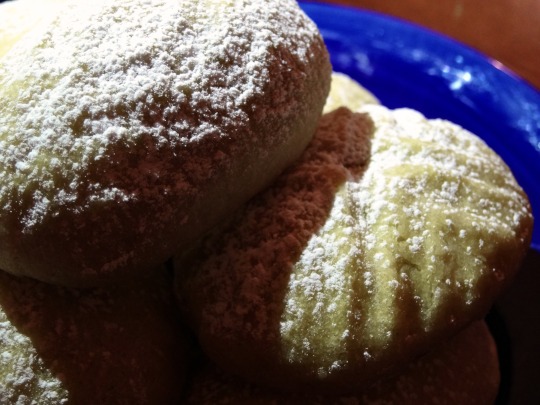
[ID: Close-up of the top of ma'moul, decorated with geometric patterns and covered in powdered sugar, in strong light and shadow. End ID]
Elsewhere
Other efforts to foreground the provenance and political-economic context of dates in a culinary setting have been made by Iraqi Jew Michael Rakowitz, whose store sold ma’moul and date syrup and informed patrons about individual people behind the hazardous transport of date imports from Iraq. Rakowitz says that his project “utilizes food as a point of entry and creates a different platform by which people can enter into conversation.”
[1] Plates from the tomb can be seen in N. de G. Davies, The tomb of Rekh-mi-Rē at Thebes, Vol. II, plates XLVII ff.
Purchase Palestinian dates
Donate to evacuate families from Gaza
Flyer campaign for eSims
Ingredients:
Makes 16 large ma'moul and 32 ka'k al-aswar; or 32 ma'moul; or 64 ka'k al-aswar.
For the dough:
360g (2 1/4 cup) fine semolina flour (سميد ناعم / طحين فرخة)
140g (1 cup + 2 Tbsp) white flour (طحين ابيض)
200g (14 Tbsp) margarine or vegetarian ghee (سمن), or olive oil
2 Tbsp (15g) powdered sugar
1 1/2 Tbsp (10g) dugga ka'k (دقة كعك)
1/2 tsp (2g) instant yeast
About 2/3 cup (190mL) water, divided (use milk if you prefer)
1 tsp toasted sesame seeds (سمسم)
1 tsp toasted nigella seeds (قزحه / حبة البركة)
Using olive oil and water for the fat and liquid in the dough is more of a rural approach to this recipe; ghee and milk (or milk powder) make for a richer cookie.
To make the bracelets easy to shape, I call for the inclusion of 1 part white flour for every 2 parts semolina (by volume). If you are only making molded cookies and like the texture of semolina flour, you can use all semolina flour; or vary the ratio as you like. Semolina flour will require more added liquid than white flour does.
For the filling:
500g pitted Madjoul dates (تمر المجهول), preferably Palestinian; or date paste
2 Tbsp oil or softened margarine
3/4 tsp dugga ka'k (دقة كعك)
3/4 tsp ground cinnamon
5 green cardamom pods, toasted, skins removed and ground; or 1/4 tsp ground cardamom
Small chunk nutmeg, toasted and ground, or 1/4 tsp ground nutmeg
10 whole cloves, toasted and ground, or 1/4 tsp ground cloves
The filling may be spiced any way you wish. Some recipes call for solely dugga ka'k (or fennel and aniseed, its main components); some for a mixture of cinnamon, cardamom, nutmeg, and/or cloves; and some for both. This recipe gives an even balance between the pungency of fennel and aniseed and the sweet spiciness of cinnamon and cloves.
Palestinian date brands include Ziyad, Zaytoun, Hasan, and Jawadir. Palestinian dates can also be purchased from Equal Exchange. You can find them online or at a local halal market. Note that an origin listed as "West Bank" does not indicate that a date company is not Israeli, as it may be based in a settlement. Avoid King Solomon, Jordan River, Mehadrin, MTex, Edom, Carmel Agrexco, Arava, and anything marked “exported by Hadiklaim”. Also avoid supermarket brands, as the origin of the dates may not be clearly marked or may be falsified to avoid boycots.
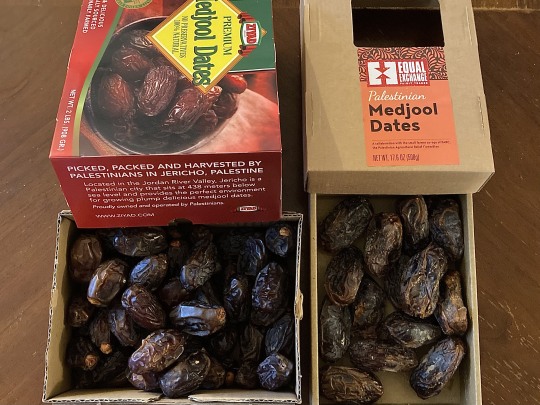
Instructions:
For the dough:
1. Melt margarine in a microwave or saucepan. Measure flours into a large mixing bowl and pour in margarine; mix thoroughly to combine. Rub flours between your hands for a few minutes to coat the grains in margarine. The texture should resemble that of coarse sad. Refrigerate the mixture overnight, or for up to 3 days.

2. Add dry ingredients to dough. If making both molded ma'moul and ka'k al-aswar, split the dough in half and add sesame and nigella seeds to one bowl.
3. Add water to each dough until you get a smooth dough that does not crack apart when formed into a ball and pressed. Press until combined and smooth, but do not over-knead—we don't want a bready texture. Set aside to rest while you make the filling.

For the filling:
1. Pit dates and check the interiors for mold. Grind all ingredients to a paste in a food processor. You may need to add a teaspoon of water, depending on the consistency of your dates.
To shape the cookies:
Divide the filling in half. One half will be used for the ma'moul, and the other half for the bracelets.
For the ma'moul:
1. With wet hands, pinch off date filling into small chunks about the size of a walnut (13-16g each, depending on the size of your mold)—or roll filling into a long log and divide into 16-20 even pieces with a dough scraper. Roll each piece of filling into a ball between your palms.
2. Divide the dough (the half without seeds) into the same number of balls as you have balls of filling, either using a kitchen scale or rolling into a log and cutting.
3. Form the dough into a cup shape. Place a ball of filling in the center, and fold the edges over to seal. Press the dough into a floured ma'moul mold to shape, then firmly tap the tip of the mold on your work surface to release; or, use a pair of spiked tweezers or a fork to add decorative designs by hand.

4. Repeat until all the the dough and filling has been used, covering the dough you're not working with to keep it from drying out. Place each cookie on a prepared baking sheet.
For the ka'k al-aswar:
1. With wet hands, divide the date filling into about 32 pieces (of about 8g each); they should each roll into a small log about the size of your pinkie finger.
2. Divide the dough (the half with the seeds) into as many pieces as you have date logs.
3. Take a ball of dough and flatten it into a thin rectangle a tiny bit longer than your date log, and about 3 times as wide. Place the date log in the center, then pull the top and bottom edges over the log and press to seal. Seal the ends.
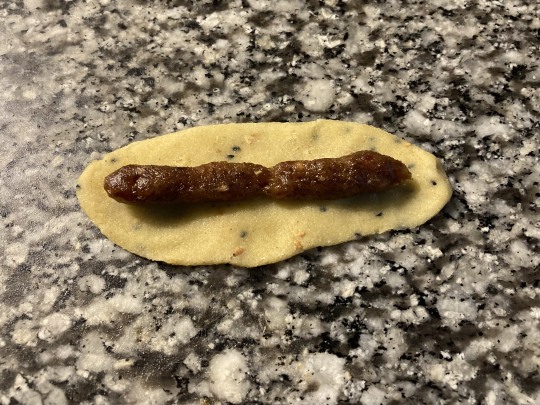
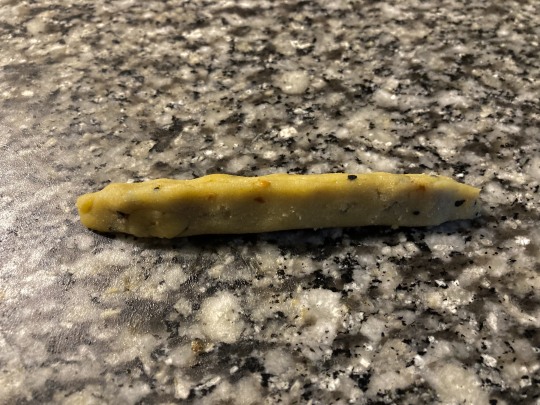
4. Roll the dough log out again to produce a thin, long rope a little bit thinner at the very ends than at the center. Press one side of the rope over the other to form a circle and press to seal.

5. Repeat until all the the dough and filling has been used, covering the dough you're not working with to keep it from drying out. Place each cookie on a prepared baking sheet.
To bake:
1. Bake ma'moul at 350 °F (175 °C) in the center of the oven for about 20 minutes, until very lightly golden brown. They will continue to firm up as they cool.
2. Increase oven heat to 400 °F (205 °C) and bake ka'k al-aswar in the top third of the oven for about 20 minutes, until golden brown.
Sprinkle cookies with powdered sugar, if desired. Store in an airtight container and serve with tea or coffee, or give to friends and neighbors.
328 notes
·
View notes
Text

Spring has sprung here in the U.S. with signs of Germany's Easter traditions everywhere! I made a post yesterday on the history of Ēostre, Ēosturmonath, and Easter traditions in the U.S. Please go to my profile page and check them out if you're interested.
I love to find ways to incorporate my skills and talents into my spiritual practices. One of my biggest joys in life is COOKING! So it's no surprise that I use food and traditional recipes to connect with Germanic culture. Inspired by the season, I found this recipe to share with you!
Sächsischer Osterkuchen
12 servings
Ingredients
2 cups flour
9 Tbsp butter
1 packet vanilla sugar
6 Tbsp sugar
1 pinch salt
1 egg
For the quark filling:
2 cups quark (Magerquark, lean quark)
4 egg yolks
1 cup sugar
2 Tbsp brandy or rum
1 small pinch of saffron powder
1/2 cup ground almonds
1/2 cup currants
zest of 1 lemon
3 Tbsp butter, melted
4 oz whipping cream
In addition:
flour for rolling
1 egg yolk
powdered sugar for dusting
Preheat oven to 350°F/180°C
Directions
Dough: mix flour with butter, vanilla, sugar, salt, and one egg. Knead it into a dough. Cover the dough, allowing it to rest at room temperature or warm oven for 30 minutes.
Filling: drain the quark in a colander. Beat egg yolks with sugar, alcohol, butter, and saffron until the mixture is creamy and the sugar has dissolved. Stir in the almonds, followed by the currants, lemon zest, melted butter, and cream. Add the quark last.
Roll out 2/3 of the dough on a floured work surface. Place on the bottom of a greased springform pan (10" / 26 cm diameter). Use the remaining third of the dough to form the sides. Spread the quark mixture to the pan and smooth it out slightly. Bake for about 50 mins.
Mix egg yolk with a small amount of water. Remove cake from oven and drizzle the egg and water evenly over the surface of the cake. Return to oven and allow the cake to bake for another 10-15 mins. Remove the cake and let it rest in the pan on a wire rack for 20 mins. With a sharp knife, loosen the sides from the pan and remove the cake. Dust cake with powdered sugar and serve while still warm.
Recipe Credit: germanfoods.org
Image Credit: germanfoods.org
14 notes
·
View notes
Text
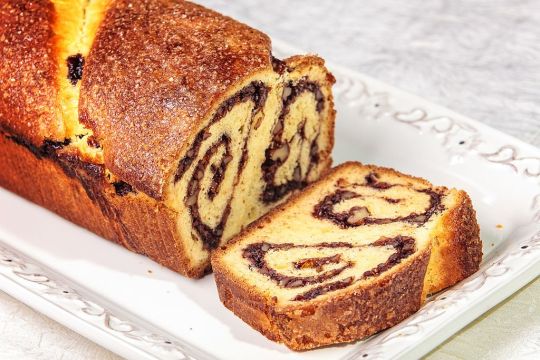
Cozonac (Romanian: [kozoˈnak]) or Kozunak (Bulgarian: козунак [kozuˈnak]) is a sweet yeast dough that can be used to make different traditional holiday breads and cakes. Often mixed with raisins, it can be baked as a loaf or rolled out with fillings like poppy seed or walnuts. It is common throughout Southeastern Europe, Romania, Bulgaria and Serbia, North Macedonia, Greece, etc. Rich in eggs, milk and butter, it is usually prepared for Easter in Romania, Serbia, Bulgaria, and in Romania and Moldova it is also traditional for Good Friday. The name comes from the Bulgarian word for hair-коса/kosa, or Greek: κοσωνάκι, romanized: kosōnáki, a diminutive form of κοσώνα, kosṓna.
0 notes
Text
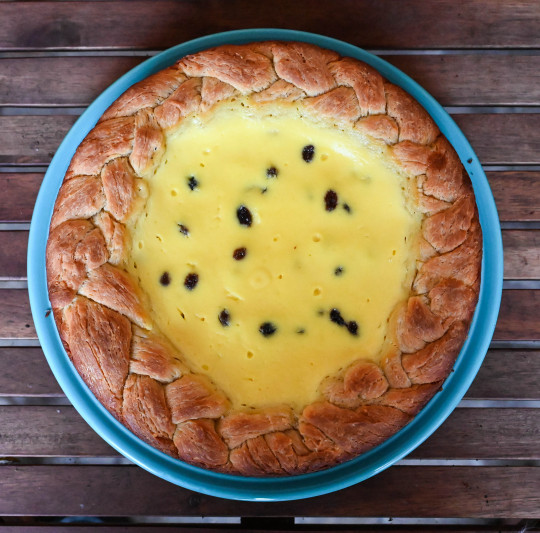
Pască
Pască is a Romanian Easter Bread, a brioche based cheesecake. It is a Easter tradition, but it is New Year's Eve; it will still work. The recipe is based on one in a Romanian cookbook that just arrived for Christmas, "Carpathia", by Irina Georgescu.
The brioche is pretty standard. It is made in the stand mixer and consists of two and half cups of flour, a tablespoon each of yeast and salt, two tablespoons of sugar, three eggs and 10 tablespoons of butter.
The dough is allowed to rise for two ours in a warm spot. Then about 40 percent of the dough is rolled into a 10 inch circle and fitted into the bottom of a well buttered spring form pan. The remain dough is divided into thirds and each third is rolled and pulled into a 25 inch "rope". The three "ropes" are braided and then fit around the edge of the spring-form pan on top of the bottom dough. The pan is then returned to a warm place for another hour.
Meanwhile the filling is make. 200 grams of ricotta is blended with three egg yolks, three tablespoons of sugar and two tablespoons of orange liqueur. 100 grams of raisins are then stirred in to the very fluid mixture.
After the hour rise, the braid around the edge of the pan is pressed outward and upward a bit making the central cavity a bit bigger. The cavity is filled with the filling and the bread is baked in a 350 degree oven for 25 minutes.
The bread is removed from the oven and cooled of a wire rack for a short while then placed in the fridge for a thorough cooling which firms up the center.
The bread (or shall we call it a cheese cake) looks beautiful. And is it a great way to celebrate the New Year. Happy New Year.
,
1 note
·
View note
Text
Castletown Café Episode 8: Pipis Cookies

“HEY EVERY !! IS THI5 TH E [[Accept All Cookies]] RESIPE [Is it me you’re looking for] ? WELL LOOK NO FURTH3R [[Little Sponge]]S !! FOR [THE LOW LOW PRICE] OF [[free]] YOU C4N FIN LLY MAKE YOUR VERY OWN [PIPIS] [[Web cookies]]. THE5E LITTLE [Suckers] LO0K JUST L I KE [Fresh PIPIS Only $4.99] WTH DELICIS [[Lemon flavored]].
“BUT WAIT !! DON,T [Breathe] YET, WE’vE GOT [[A 2 FOR 1 SPECIL]] ! [NOT ONLY DO YOU GET] A [[Browser cookie]] RESIPE BUT ONE FOR [[The icing on the cake]] INCLUDED !
“CL1CK HERE BELOW [[While Supplies Last!]]”
Thank you, Spamton, I’ll take it from here.
Easter may have come and gone, but spring is still in full swing and so is nesting season. Wouldn’t surprise me if Spamton loves this time of year because, well, pipis. Most likely inspired by Pipi’s attack from the Mega Man franchise, hence the name, these strange blue eggs explode into little projectiles shaped like Spamton’s face that are inescapable and deal damage. When confronted with them, your goal is to destroy them before they destroy you.
Despite resembling eggs, they are described as “an invasive species of freshwater clam”, a joke referring to the pipi, a species of seawater clam native to New Zealand, which shares the same name as the aforementioned Pipi.
These sugar cookies inspired by Spamton’s infamous attack are full of lemon flavor fitting for spring! How fancy, a few of them are even decorated with little bows, a nod to the very rare Ms. Pipis you may encounter in an otherwise darker route.
For the cookie recipe, I looked at several lemon sugar cookie recipes and based mine off of the two I liked best: Rosanna Pansino’s Lemon Sugar Cookie recipe from her book “The Nerdy Nummies Cookbook”, as well as Maria Lichty’s recipe from twopeasandtheirpod.com - with a few of my own modifications. These cookies turned out beautifully. Soft, fluffy, lemony, and delicious.
As for the lemon icing, I ran into trouble. Not necessarily with the recipe so much as my own inexperience with making and working with cookie icing. The header image is evidence I’m no expert with royal icing and I do need a lot of practice, and I learned the hard way just how thin this icing can be. I totally understand if you want to use a different icing recipe after reading this, but be warned, many cookie icings call for milk, which doesn’t mix well with lemon juice unless you’re making buttermilk. I was worried this would result in lumpy icing, and since I didn’t have any non-dairy milk alternatives, I instead followed Rosanna Pansino’s recipe on Royal Icing (also found in her Nerdy Nummies cookbook) which uses egg whites, powdered sugar, vanilla, and my own addition of 1/4 cup lemon juice to make it “lemon royal icing”. If you’re going to use this recipe, I strongly suggest adding up to 5 cups of powdered sugar so it’s thicker and not too runny, but still floods nicely.
And now, on to the recipes!
PIPIS COOKIES:
Ingredients:
3 cups all-purpose flour
1 tsp baking powder
1/2 tsp baking soda
1/4 tsp salt
2 sticks (1 cup) softened butter (it doesn’t matter if it’s salted or unsalted)
1 & 1/2 cup sugar
2 large eggs
2 tablespoons lemon zest
2 tablespoons freshly squeezed lemon juice
1 tsp vanilla
Combine flour, baking soda, baking powder, and salt in a mixing bowl and set aside. In another, larger mixing bowl, cream together butter and sugar, then beat in eggs, vanilla, lemon zest and lemon juice. Lastly add in your flour mixture, a little at a time, forming your cookie dough. After you’ve gotten all your flour mixture fully incorporated into a nice big doughy ball, divide that dough in half, shape those halves into balls, place in separate airtight containers, and store in the refrigerator anywhere between several hours to overnight.
Preheat your oven to 350 F. Grease your cookie sheets or line them with parchment paper. Bring the chilled dough out of the refrigerator and dust your work surface with flour, then roll out dough to 1/4 inch thick. With an egg-shaped cookie cutter, cut out cookies and transfer these to cookie sheets. Re-roll the dough and cut out more cookies to use as much of your dough as possible.
Bake cookies for 8 to 10 minutes or until cookies are puffed up and no longer shiny or wet looking. Let cookies cool on cookie sheet for several minutes before transferring to a wire rack to cool completely.
[[BIG SHOT]] TIP: When one of your cookie sheets is full, bake that sheet of cookies while continuing to roll out dough and cut out more cookies to fill in the other sheet. This way, you always have a batch baking as you continue to use as much of your dough as possible, and saves time waiting. Don’t forget to set a timer for the baking cookies!
After your cookies have baked and cooled, it’s time to make the icing.
LEMON [PIPIS] ICING:
Ingredients:
4 or 5 egg whites - if you want it thicker like I did, maybe just use 4 egg whites, but 5 will give you more icing if you need it.
4 or 5 cups powdered sugar
1/4 cup freshly squeezed lemon juice
1/2 tsp vanilla extract
Blue and red/pink food coloring
First, with a hand or stand mixer, whip your egg whites until foamy. Add in your powdered sugar, a cup at a time, until desired consistency is reached - if you want your icing nice and thick with a high viscosity, you’ll need at least a whole 32 ounce package of powdered sugar and if you used 5 egg whites, you’ll need another cup more, so make sure you have at least two packages of powdered sugar!
Next, mix in your lemon juice and vanilla. Divide your icing up into different bowls. You’ll want 75 percent of your icing to be blue, 5 percent of it pink, and to leave about 20 percent of it white. Add several drops of blue food coloring to the largest amount of icing (plus an optional drop or two of green to make it teal) and a couple drops of red to the smallest amount to make it pink. Only a few cookies will have pink bows.
You’ll want a piping bag with a good tip. I used a Wilton Tip #4 along with a Wilton re-usable piping bag and coupler. To ice the cookies, pipe an outline following the shape of the cookie, then fill it in, or “flood” it. Don’t get too close to the edges - these cookies are not a flat surface and the icing can still run down the sides. Once your blue icing has begun to harden, grab your white royal icing and write in “pipis” on each cookie (or even just some of them). Add a pink bow on only a few of them - the “Ms. Pipis” are meant to be rare! The easiest way to do this is to make two tiny triangles joined together at the tips. Instant bow!
What I like about the end result of my icing attempt is how only the outside hardened at first, leaving the inside soft for the first couple of days, when the cookies are at their freshest. Sure, this meant they didn’t stack as easily, but I’m okay with that. If you’re more experienced with cookie decorating, I’d love to hear from you if you have any tips you want to share. Thank you for reading!
Sources:
Rosanna Pansino, “The Nerdy Nummies Cookbook”, ISBN 978-1-5011-0401-5
Maria Lichty, https://www.twopeasandtheirpod.com/lemon-sugar-cookies/
#castletown cafe#deltarune#deltarune chapter 2#pipis#spamton#deltarune pipis#pipis deltarune#spamton g spamton#spamton fanart#deltarune food#deltarune inspired recipe#cookies#sugar cookies#recipe#cw food#tw food#my art
73 notes
·
View notes
Note
Honey♥️. Pokeshipping is dead ☠️☠️☠️ and amourshipping is canon ♥️♥️♥️♥️.
And there absolutely nothing you can do about it ☺️
Oh, hey here you are we missed you❤️ I was seriously thinking that you forgot about us here on tumblr since you moved on twitter🤧
Ingredients
SHORTCRUST PASTRY
» 300g of plain flour
» 1 tbsp of sugar
» 150g of unsalted butter
» 1 egg
» 150ml of water
» icing sugar, for dusting
FILLING
» 350g of grano cotto, or Arborio rice
» 250ml of milk
» 30g of unsalted butter
» 1 lemon, zest only
» 2 eggs
» 2 egg yolks
» 300g of sugar
» 350g of ricotta
» 40g of candied citron
» 40g of candied peel, orange
» 20g of orange blossom water
» 1/4 tsp vanilla paste
Method
1. Begin by making the pastry. Place the flour, sugar and butter in a bowl and rub together with your fingers until it has the consistency of breadcrumbs. Add the egg and mix with your hands until combined.
2. Add the water a little at a time, stirring well, until the mixture comes together to form a dough – you may not need to use all the water.
3. Shape the dough into a ball, wrap in cling film, and place in the fridge for at least 1 hour to chill.
4. Meanwhile, make the filling. Place the grano cotto in a saucepan and add the milk, butter and lemon zest. Bring to the boil, then reduce to a simmer, stirring all the time until cooked – this will take about 20–25 minutes. Remove from the heat and allow to cool completely.
5. Place the eggs in a bowl with the sugar and whisk until the eggs turn pale.
6. Place the ricotta cheese in a blender and blitz until it has the consistency of whipped cream. Add it to the egg and sugar mixture, folding it in with a spatula.
7. Add the cooled wheat mixture, candied peel, orange flower water and the vanilla bean paste into the ricotta mixture. Stir together until combined and put to one side.
8. Preheat the oven to 160°C/gas mark 3 and butter a 24cm x 4cm cake tin.
9. Dust a clean surface with icing sugar and evenly roll out the pastry, carefully lining the cake tin. Prick the bottom with a fork and pour in the filling, trimming the pastry from the edges of the tin to leave a neat edge. Reserve any spare pastry to decorate and form into a ball.
10. Roll out the ball into an even layer. Using a pasta wheel, cut 8 strips long enough to be placed across the cake tin. Place 4 of them across the top of the pastiera in one direction and then place the other 4 diagonally to create lozenge shapes.
11. Trim the edges of of the strips against the edge of the tin and place the pasteria in the oven to bake for 1 hour. After this time, cover the top with a piece of tin foil and cook for another 30 minutes. Allow it to cool completely in the tin before carefully turning it out.
12. Serve the pastiera cold with a good quality Italian espresso coffee. It makes a lovely Easter breakfast, accompaniment to afternoon tea or dessert.
Have fun❤️
4 notes
·
View notes
Note
So I saw your discussion of GBBO and Babka (I agree). And I was thinking about it and it made me think of how the generic way of discussing latkes it calling them potato pancakes. I guess I'm just curious if you have similar feelings regarding that sort of similar generalization of those as well. (I haven't personally looked into how many other cultures and groups have their own versions of latkes. I am a humble Jew who has only ever known them as Jewish.
Oooooh interesting question! I’m not a food historian so I can’t say for sure, but I think because potatoes are a very common food and because latkes exist in one form or another in many cultures, they probably aren’t exclusively a Jewish food. There’s a lot of intersection between foods of various cultures that live (or historically have lived) side by side, just like with language. The thing with babka is that it not only came out of Jewish communities, it’s also specifically known as a Jewish food.
You can go into any diner and get hash browns, and it’s just one of the many ways of having potatoes from the menu. But you can pretty much only get babka primarily at Jewish bakeries (or at least you could up until it became the new hipster treat a few years ago). In terms of using more general language for it, I’ve only heard of British Jews calling it “yeast cake” and that’s likely due to the small Jewish population in England and the always present racism against anyone who is remotely culturally different. Also, putting the word “yeast” in the name of any kind of food makes it sound gross and unappealing, but I digress.
So the difference between latkes and babka, in this sense? Latkes are a pretty simple food to make, so the basic recipe was probably easy to stumble upon if you had potatoes, flour, and oil and were poor/in need of calories. The biggest difference between latkes and hash browns is that latkes use matzo meal and hash browns use flour. Babka, on the other hand, is involved as fuck and the kind of bake that would be invented by someone who knows their way around that kind of dough, at the very least. The original recipes were made from leftover challah dough, because challah was made weekly (and used stuff like jam and cinnamon, because surprisingly, chocolate wasn’t suuuuper available in the shtetl). So you’d have to be making a lot of challah, or making it often, to start getting creative with the excess dough.
Plaited egg bread isn’t exclusively Jewish, but the recipe Paul Hollywood put in his cookbook has dairy, which makes it more of a European Easter bread. Partly because that’s literally what that recipe is, partly because Jews traditionally leave out the milk and use oil instead of butter so that challah can be parve (neither meat nor milk, because fuck yeah kashrut). I’m just guessing here, but putting dairy in a festive bread that’s often eaten for a Spring holiday probably developed because that’s when the cows and goats have babays and their milk is overflowing. Anyway, there’s this sense that even though challah wasn’t an exclusively Jewish recipe, it wasn’t a regular bake year-round outside of Jewish communities unless you were wealthy, which is why it makes sense that babka developed in Jewish communities and is therefore very much a Jewish food.
tl;dr we know for a fact that babka came from Jewish communities whereas latkes/potato pancakes are a more ubiquitous food so in terms of their names and cultural relevance, babka has a much more specifically Jewish one on both counts.
8 notes
·
View notes
Photo




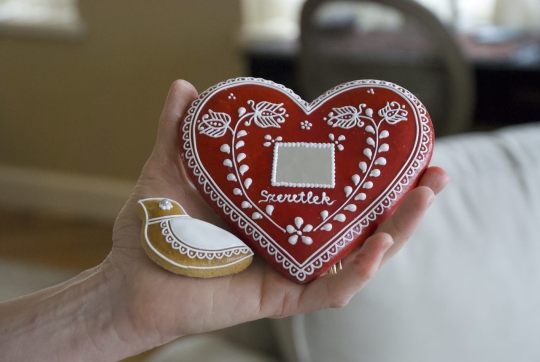
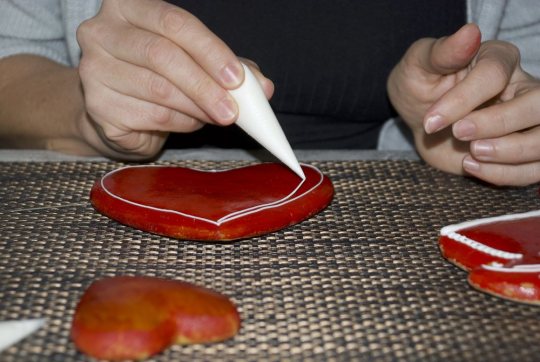
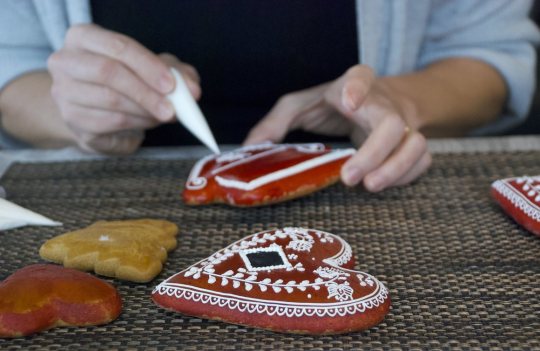


Why Hungarians Make the World’s Most Beautiful Gingerbread? While it’s mainly a Christmastime treat in countries such as the U.S., gingerbread is a year-round affair in Hungary, made by bakers for weddings, Easter, and birthdays.Ancient Greeks enjoyed an ancestor of gingerbread, cakes made with honey, and put it in the mouths of the dead for the trip to the afterlife. In many countries, bakers made honey cakes for all kinds of events, such as saint’s days. In the days before icing, the dough was pressed into carved wooden molds, and esteemed bakers had their own proprietary designs. When spices from the east circulated throughout Europe, gingerbread made with ginger, pepper, and other warming spices became a hot commodity for special occasions. Hungarian spice mix contains pepper, cardamom, and others too, but suprisingly not ginger!. Since Hungary has long been a honey-producing powerhouse, it was a natural place for honey-based gingerbread to take root. The Hungarian town of Debrecen was a center of gingerbread preparation, and the home of a guild dedicated to baking it. Red is a traditional color for Hungarian gingerbread, and can be added in two ways. For a brighter look, decorators brush cookies with a mix of food coloring and egg yolk and set them in the oven to dry. But for a darker sheen, color can be painted on after baking, with hints of the gingerbread shining like gold underneath. One of the reasons gingerbread is not solely associated with Christmas in Hungary is the popularity of the heart forms. Once traditional gifts from young men for their sweethearts, the hearts often feature small mirrors and the word 'Szeretlek' - I Love You , a declaration of love. (Similar hearts are popular in Germany and Croatia.) A girl might return the boy’s regard with a gingerbread hussar, or solider. The Hungarian love for gingerbread has stayed strong year-round. Hungarian Easter also features three-dimensional gingerbread eggs, painted and covered in royal icing. When white icing became common, many designs were inspired by the other famous Hungarian folk art, embroidery. Flowers, hearts, and birds are the traditional designs for both embroidery and cookies. Yet despite their ethereal decorations, gingerbread is very practical, as it stays fresh for a long time, and some varieties can even be kept for years as a decoration.
#hungarian ginger#hungarian gingerbread#hungarian christmas#hungarian easter#Hungarian folk art#hungarian folklore
19 notes
·
View notes
Text
10 Delicious Easter Brunch Recipes
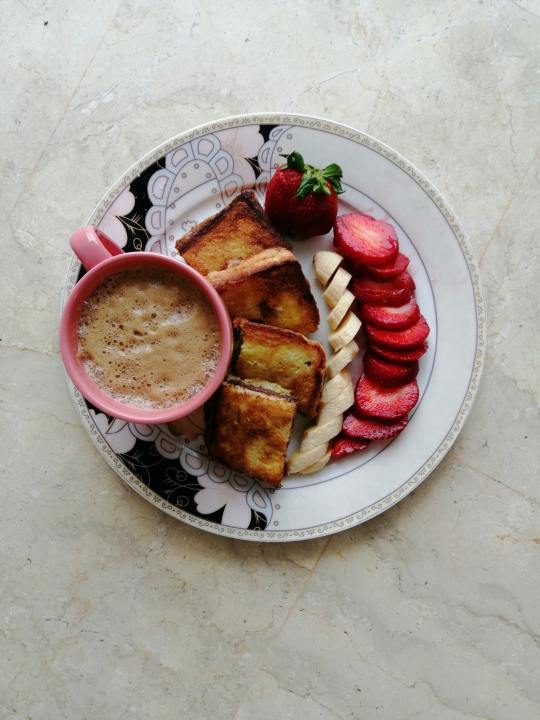
Easter is arising quickly on April 1, and whether you’re keeping it quiet or throwing an extravaganza, these recipes will make your brunch an entire lot better. a number of these sweet and savory options are more decadent, while others are a touch lighter, but there’s something in here for each craving.
1. Hash Brown Egg Nests with Avocado
Meet these little birds nests constructed out of golden-fried hash browns and cheese, crammed with baked eggs, bacon, and more cheese, with a side of avocado. Parsley is optional since some aren’t a lover. this is often a fun and attractive bite-sized version of a loaded potato that’s bound to impress your guests.
2. sugar Banana French toast Casserole
What’s better than French toast? A full casserole pan of it, crammed with sugar caramel sauce and bananas. this is often the right overnight meal to assist the flavors really marinate and take the compute of cooking on Easter morning.
3. Skillet Fried Chicken and Waffles
For those looking to infuse their brunch with some deep-fried Southern food, look no further than this recipe for skillet-fried chicken and waffles. The special buttermilk marinade, seasoning, and therefore the addition of sliced strawberries set this recipe aside from the remainder. you'll even crack a prod top if you would like.
4. Spinach Ricotta Brunch Bake
This is a refreshing and aesthetically pleasing remix of spanakopita, the flaky Greek pastry puff treat crammed with spinach and cheese. Instead, this recipe uses ricotta, bacon, and red peppers. The result's a powerful, flaky, and filling brunch that guests will love.
5. shirred egg Breakfast Pizza
Pizza for breakfast might sound like dismal leftovers sitting around during a chapterhouse, but breakfast pizza may be a whole other magical culinary world that you’re getting to wish you heard of sooner. A classic dough base is topped with baked eggs, cheese, bacon, and herbs. Try an enormous communal pie or charming personal-sized ones.
6. Blueberry flavorer Pancakes with Blueberry Glaze
These blueberry flavorer pancakes look straight up heavenly – and you’d never guess they were vegan. They’re topped with a blueberry glaze and layered with bananas in between. This recipe is so well-constructed, it even has the power to convert diehard dairy and pancake lovers alike.
7. Lemon Rolls
While cinnamon rolls are always a delicious treat, this recipe featuring a lemon twist (thanks to sumptuous lemon pudding mix) maybe a moist, fresh combat a lemon loaf cake (but everything tastes better in sweet rolls and with frosting, right?) These lemon rolls go perfectly with a cup of Earl Grey tea.
8. Asparagus Shakshuka
This is a bright, flavorful twist on the classic tomato-based egg dish referred to as “shakshuka” in Middle Eastern cultures. All the colorful ingredients marry with spices during a delectable way that’s still healthy. Serve it with some warm pita and couscous.
9. Nova Lox eggs Benedict with Hollandaise
Eggs Benedict may be a classic brunch move, and therefore the words “hollandaise” and “Easter brunch” almost seem to return hand-in-hand. So, we found the last word eggs Benedict recipe, with a couple of healthy omega fats to form up for the luscious sauce you’re close to pouring over it. Topped with a dill garnish, this Scandinavian-inspired brunch is as yummy because it is straightforward to form.
10. Strawberry Coffee Cake Muffins
Coffee companies should take note: you almost certainly wouldn’t consider combining coffee and strawberry flavors, but the result's staggeringly delicious. a definite coffee swirl is infused with textured fruitiness, so you never need to choose from a coffee cake muffin and strawberry muffin ever again. the right platter to start your brunch with or end it on a sweet note.
1 note
·
View note
Photo
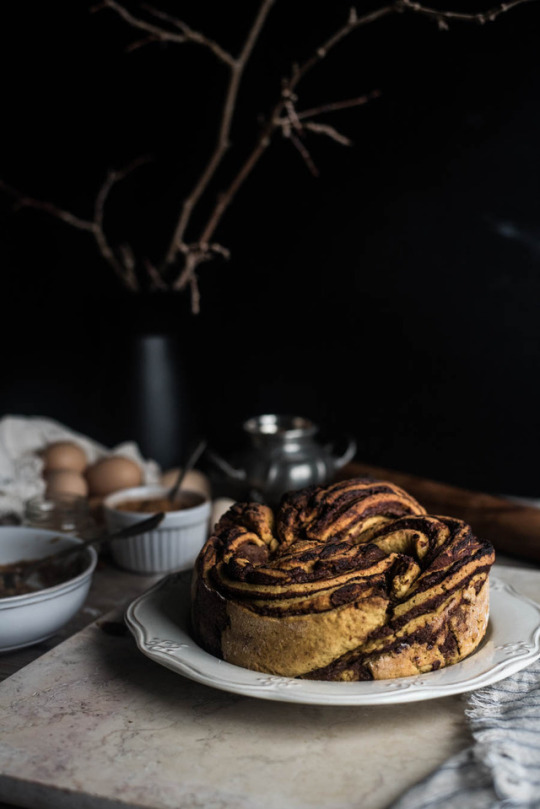
FOLAR DE FOLHAS SEM GLUTEN [VERSÃO MAIS SAUDÁVEL]
HEALTHIER GLUTEN-FREE CINNAMON PORTUGUESE EASTER CAKE
Para 2 folares
Ingredientes
Farinha Sem Gluten:
240g farinha de arroz
135g farinha de trigo sarraceno
150g amido de milho
60g fécula de batata
Massa:
1 chv. leite de amêndoa
1/2 chv. açúcar de coco ou mascavado
1 1/2 clh.ch sal
2 clh.ch. erva doce em pó
110g manteiga vegetal ou ghee
4 clh.ch fermento seco
3 ovos, L
20g psyllium husk em pó
Recheio:
300g tâmara medjool
1/4 chv. leite de amêndoa
1 clh.sp. óleo de coco
1/8 clh.ch sal
3 a 4 clh.sp canela em pó
Unte duas formas com 16cm diâmetro e reserve.
Para o recheio, corte e retire o caroço às tâmaras, coloque numa taça com água morna e deixe demolhar durante 2 horas.
Assim que estiverem amolecidas, escorra bem e coloque as tâmaras juntamente com os restantes ingredientes para o recheio num processador, triture bem e reserve.
Para a massa, aqueça o leite juntamente com a manteiga e o açúcar até que estes derretam. Retire do lume e deixe arrafecer até aos 40ºC.
Junte o fermento e mexa até dissolver. Deixe repousar alguns minutos até que a espuma apareça à superfície.
Numa tijela grande misture bem todos os ingredientes secos, junte os ovos e a mistura do fermento e amasse bem, até formar uma bola de massa homogénea e sem grumos.
Divida a massa em dois. Coloque cada porção entre duas folhas de película plástica polvilhadas com farinha de arroz e estenda o máximo poss��vel, entre 3 a 5 mm espessura (desta vez a minha ficou um pouco espessa e o resultado não foi dos melhores). Discarte a película superior e barre toda a superfície com metade do recheio. Polvilhe com canela a gosto e enrrole com a ajuda da outra película.
Corte o rolo ao meio e com muito cuidado entrelace as duas porções, enrole e coloque na forma. Repita o processo para a outra porção de massa.
Cubra os folares com a película plástica e deixe repousar entre 1 a 2 horas. Entretanto aqueça o forno a 180ºC.
Passado esse tempo, coloque as formas no forno e deixe cozer entre 45 a 50 minutos. Retire do forno e deixe arrefecer ligeiramente antes de desenformar.
Nota: Pode sempre optar pela versão tradicional, estendendo discos de massa com o diâmetro da forma e fazer o bolo por camadas. ;)
Uma Páscoa muito feliz para todos.
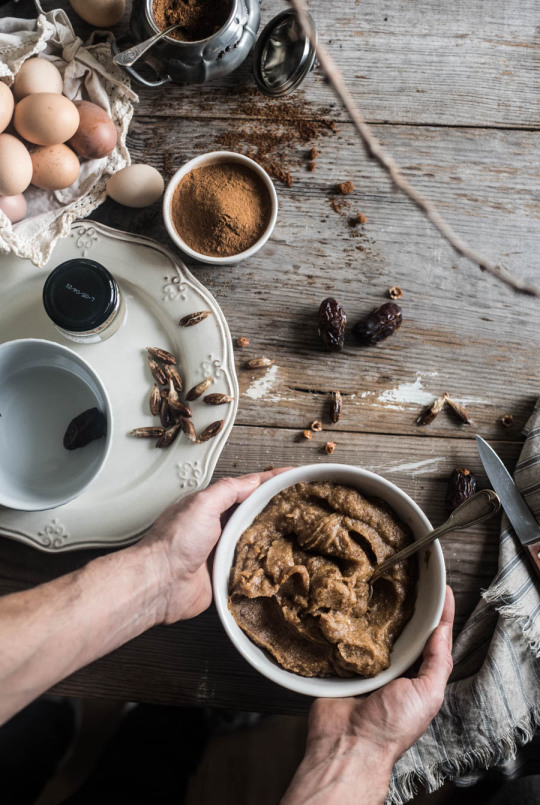
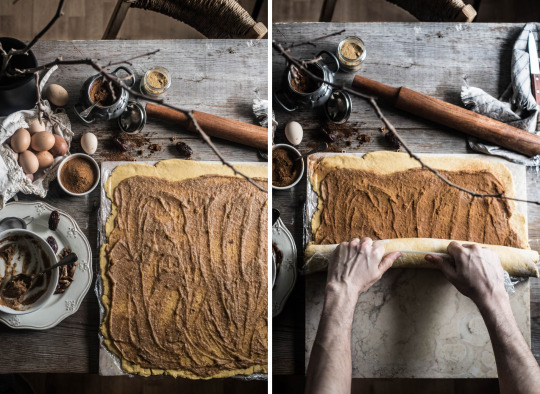

English Version
Yield 2 Cakes
Ingredients
Gluten-free flour mixture:
240g rice flour
135g buckwheat flour
150g corn starch
60g potato starch
Dough:
1 cup almond milk
1/2 cup coconut sugar or brown sugar
1 1/2 tsp salt
2 tsp anise powder
110g vegan butter or ghee
4 tsp dried yeast
3 eggs, L
20g psyllium husk powder
Filling:
300g medjool dates
1/4 cup almond milk
1 tbsp coconut oil
1/8 tsp salt
3 a 4 tbsp cinnamon powder
Grease two 16cm round baking pans and reserve.
To make the filling, chop and remove the dates pit, put them into warm water to soak for about 2 hours.
Once softened, drain and put them into a food processor with the milk, salt and coconut oil and pulse until completely smooth. Reserve.
To make the dough, warm up the milk together with butter and sugar until they all melt. Remove the pan from the heat and let it cool to lukewarm, about 40ºC.
Add the yeast and let stand until the mixture foams, about 5 minutes.
Mix all the dry ingredients in a stand mixer bowl, add the eggs, the yeast mixture and mix well until a smooth ball is formed. Add more flour if needed.
Divide the dough in two. Put one portion between two layers of plastic warp and roll it out to 3 to 5 mm thick. To fill the dough, spread half the dates filling all over the dough, sprinkle it with the desired amount of cinnamon and roll up the dough.
Cut the dough cylinder in half horizontally and carefully take the two halves of the cylinder and twist them together, pinching the ends. Roll it into a circle and put it into the greased pan. Repeat all the process to make other cake.
Cover each pan with plastic wrap and set them aside to rise from 1 to 2 hours.
Meanwhile, preheat the oven to 180ºC.
Once the dough has rised, put the cakes into the oven and let them cook for 45 to 50 minutes. Remove from the oven and let them cool slightly before unmold.
Note: You can always make the traditional Portuguese version, by rolling out the dough into circles with size of the pans and assemble them by layers of dough and filling. ;)
Wish you all a lovely and sweet Easter.
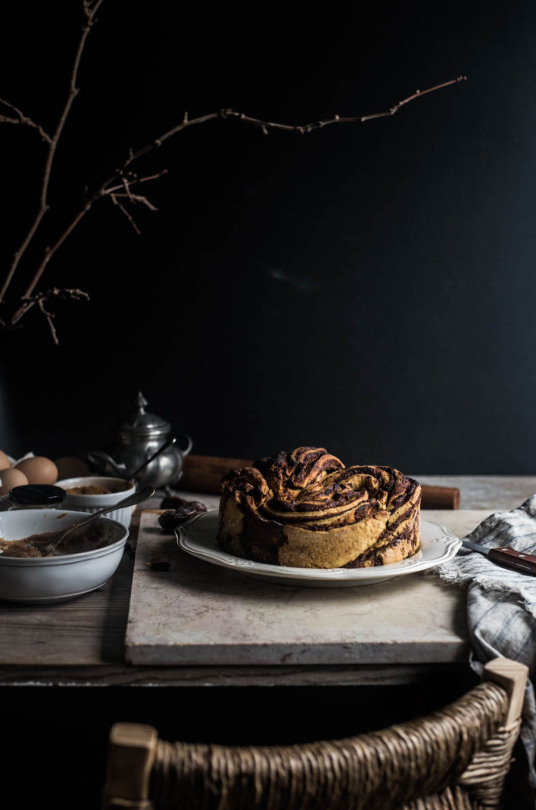
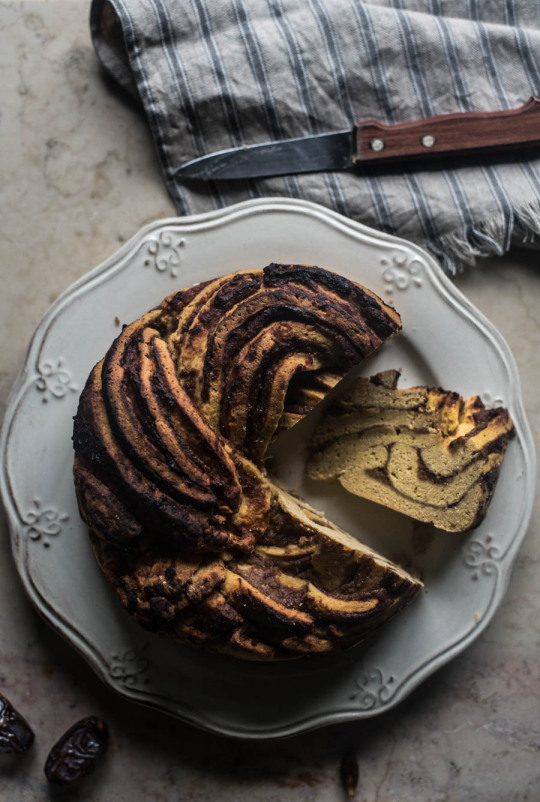
#easter cake#sem gluten#sem lactose#healthy cake#foodphotography#gluten free#sin gluten#portuguese cake#cinnamon#senza glutine
17 notes
·
View notes
Text
Polish Poppy Seed Cake
Introducing strucla makowa, probably the most beloved (if not always realised) cake in Poland, which – if made well – will steal your heart immediately.
One of the things I found rather interesting during my first travels abroad, was that poppy seed rolls, cakes, buns and other baked goods, were hugely unavailable in local bakeries. I was both surprised, that I had noticed the lack of thereof (as I hardly noticed their uniqueness growing up), and considered insane when asking for them in bakeries, as if they were supposed to be something of an everyday item.
With the time being, I found myself increasingly craving the satisfying, rich, every time bewilderingly delicious sweet poppy seed filling. And I wanted it in a form that has stuck in my memory as festive, a symbol of Christmas, Easter, weddings, birthday parties and other joyous celebrations. Makowiec, or how it’s called where I come from: strucla makowa (also known under simple strucla): a strudel-like yeast cake, with a poppy seed filling, enriched with raisins, nuts, candied citrus peel, honey and other delicacies. Making a strucla however, is not something everyone can do. In fact, it is considered quite a skill, and announcing readiness for actually baking one might be seen as an act of madness. Not to mention that, the risk increases with the number of people in the family and friend circle who can actually pull it off.
With a bit of determination, though, and maybe a good recipe at hand, impossible is nothing. And so, I present you all strucla makowa, probably the most beloved (if not always realised) cake in Poland, which – if made well – will steal your heart immediately.
POLISH POPPY SEED CAKE
Ingredients
pastry
3,5 cup wheat flour
180ml warm milk
150g melted butter
6 egg yolks
45g fresh yeast
6 tbsp sugar
pinch of salt
1,5 tbsp vodka
poppy seed filling
500g dry poppy seeds
150g sugar
100g raisins
50g chopped walnuts
3 tbsp honey
few drops of almond extract
1 tsp cinnamon
2 tbsp candied orange peel, chopped
6 egg whites, beaten
icing
2 cups icing sugar
juice of half a lemon
2-3 tbsp water
HOW TO MAKE?
1. Crumble the yeast into a small bowl, add 3 tbsp of sugar, warm milk and few spoons of flour. Mix well. Set aside for about 10-15 minutes, until the mixture doubles in size.
2. Add flour and the rest of ingredients for the pastry (apart from melted butter and yeast mixture) into a big bowl, and mix well. Add melted butter (cooled) and yeast mixture, and mix everything together with a wooden spoon until no dry patches left. Transfer onto floured pastry board and knead the dough until smooth and elastic. Return the pastry into the bowl, cover with a cloth and set aside for at leats an hour, or until doubled in size.
3. Prepare the poppy seed filling. Add boiling water into the bowl with poppy seeds, then get rid of the water and leave in the sieve to drain properly. Grind the poppy seeds in the meat mincer three times. When ready, add all the poppy seed filling ingredients to the ground poppy seeds and mix thoroughly. Lastly, add beaten egg whites and mix in delicately with a wooden spoon.
4. When the dough has risen, transfer it to a pastry board and divide into three even parts. Roll out the first part into a 3mm thick rectangular shape. Using a spatula, spread 1/3 of the poppy seed filling on top, then roll into a roulade.
5. Grease a baking parchment sheet with oil, then place ready strucla roll on top and wrap into the parchment twice, making sure there is about 1cm gap on top. Repeat with remaining two parts of pastry dough.
6. When all the strucle are ready, let them rest for about 15 minutes before baking. Meanwhile, preheat the oven to 190 degrees Celsius.
7. Place the cakes (together with baking parchment!) on the baking tray and bake for about 30-35 minutes.
8. After baking, let the cakes cool while preparing the icing. To do so, mix icing sugar, lemon juice and water with a whisk, until smooth and glossy. If the icing is too thick, add a bit more water or lemon juice, if it’s too runny – add some more sugar.
9. Decorate the cakes with icing and chopped candied peel. Make sure the cakes are not warm, otherwise the icing will not stay on top. Enjoy!
#christmas#bread#traditional breads#holiday baking#bake#baking#poppy seed bread#poppy seed cake#polish#stucla#strucla makowa
1 note
·
View note
Link
Vickys Raisin Loaf with Bara Brith conversion GF DF EF SF NF. The loaf should bounce back when pressed lightly on top and a skewer test will indicate that it's done. Vickys Roasterbag Chicken Chasseur GF DF EF SF NF. Vickys Ginger & Apple Muffins, GF DF … Vickys Pineapple Banana Loaf Cake, GF DF … Ingredients of Vickys Easter Carrot Cake Overnight Oats, GF DF EF SF NF It's of gluten-free rolled oats.
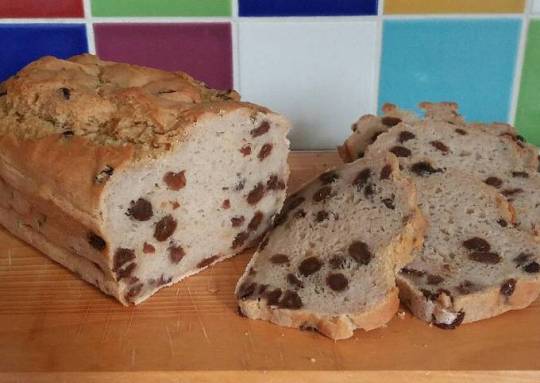
Make a large freezer or food bag into a piping bag by cutting half an inch off of one bottom corner. Before you jump to Vickys Breadsticks, GF DF EF SF NF recipe, you may want to read this short interesting healthy tips about Your Overall Health Can Be Affected By The Foods You Choose To Consume. When it comes to the foods that you eat, you will recognize that your overall health can be.
Hey everyone, it is Jim, welcome to my recipe page. Today, I'm gonna show you how to make a special dish, vickys raisin loaf with bara brith conversion gf df ef sf nf. It is one of my favorites. For mine, I'm gonna make it a bit tasty. This will be really delicious.
The loaf should bounce back when pressed lightly on top and a skewer test will indicate that it's done. Vickys Roasterbag Chicken Chasseur GF DF EF SF NF. Vickys Ginger & Apple Muffins, GF DF … Vickys Pineapple Banana Loaf Cake, GF DF … Ingredients of Vickys Easter Carrot Cake Overnight Oats, GF DF EF SF NF It's of gluten-free rolled oats.
Vickys Raisin Loaf with Bara Brith conversion GF DF EF SF NF is one of the most popular of recent trending meals on earth. It is enjoyed by millions daily. It is easy, it is fast, it tastes delicious. They are fine and they look fantastic. Vickys Raisin Loaf with Bara Brith conversion GF DF EF SF NF is something that I have loved my whole life.
To get started with this particular recipe, we have to first prepare a few ingredients. You can cook vickys raisin loaf with bara brith conversion gf df ef sf nf using 14 ingredients and 12 steps. Here is how you cook it.
The ingredients needed to make Vickys Raisin Loaf with Bara Brith conversion GF DF EF SF NF:
{Get of raisins.
{Prepare of potato starch - NOT flour.
{Make ready of sorghum flour.
{Make ready of millet flour.
{Get of xanthan gum.
{Take of & 1/4 tsp salt.
{Get of instant yeast (2 & 1/4 tsp).
{Make ready of ground cinnamon.
{Prepare of mixed spice - see my previously posted recipe.
{Make ready of warm water.
{Make ready of Stork block margarine, melted.
{Prepare of golden syrup / honey / agave nectar.
{Make ready of Vickys Egg Replacer mixed with 4 tbsp water.
{Make ready of another 2 tbsp margarine for coating after baking.
Bara brith (literally "mottled bread") is sometimes made with yeast but Mary's family recipe omits it, giving a wonderfully sticky texture. It is best spread with plenty of butter. Recipes Vickys No Meat Lentil Chilli, GF DF EF SF NF. You need of Salt & pepper.
Instructions to make Vickys Raisin Loaf with Bara Brith conversion GF DF EF SF NF:
Put the raisins in a bowl and cover with boiling water. Set aside overnight.
Preheat the oven to gas 4 / 180C / 350F and line a loaf tin with parchment paper and spray lightly with oil then dust with flour.
Put the flours, starch, xanthan gum, yeast, salt and spices in a bowl and whisk together well.
Beat in the warm water, melted margarine, syrup and egg replacer mixture until you form a smooth batter, cake batter consistency.
Drain the raisins well then stir into the batter.
Pour the batter into the loaf tin and smooth the top with the back of a wet spoon.
Bake for 45 - 55 minutes until golden and risen. If you remove the tin and tap the bottom of the loaf it should sound hollow when done. If the bottom of the loaf is still a bit damp after you remove the tin, put it back in the tin upsides down and bake a further 5 - 10 minutes. For a crusty loaf, return to the oven without the tin and bake a further 10 minutes.
Rub the entire loaf with extra margarine to soften the crust as it cools then let cool on a wire rack.
Slice when fully cooled. Wrap individual slices in clingfilm then again in foil to freeze for another day. Defrost then toast.
Tastes lovely toasted.
You can replace the individual flours with a store pre-mixed gluten-free flour blend but you'll need to adjust the liquid added. Use the raisin water if you need to add extra or some orange juice to kick up the flavour a bit works well. The batter should be like cake batter.
Substitutions for Bara Brith / Welsh Fruit Cake - use 300g mixed fruit in place of raisins, replace golden syrup with 100g soft brown sugar, use 350ml brewed tea in place of warm water and soak mixed fruit in that - drain tea straight into batter and mix before adding the fruit in. Glaze with warm runny honey.
Vickys Fusilli & Veg with Anchovy Glaze, GF DF EF SF NF one at a time. Start cooking the pasta in boiling, salted water according to the pack instructions. Add the broccoli and sweetcorn to the pasta pan when the pasta is almost ready and cook them through. Vickys Ravioli with Choice of Fillings & Sauces, GF DF EF SF NF. Please note that this dough was made by hand and not with a pasta machine.
So that's going to wrap this up with this special food vickys raisin loaf with bara brith conversion gf df ef sf nf recipe. Thanks so much for reading. I am sure that you can make this at home. There's gonna be more interesting food in home recipes coming up. Don't forget to bookmark this page in your browser, and share it to your family, colleague and friends. Thanks again for reading. Go on get cooking!
0 notes
Text
Green zucchini cake
Life is a crazy story. I'd never think that my life will look like it does right now. There was a straight plan: law school -> work at a legal practice -> getting a specialisation -> creating my own legal practice -> working like crazy on saving the world. Meantime, it has all changed. I'd never expect that I'll be able to live next to an ocean in a fisherman's hut during the coldest march in the history of Portugal. I did not expect to have the coolest and craziest little performer. I did not expect that it will feel strange to be back home. But it does and I love it. Not always, sometimes life makes me a crappy joke.
Not a typical Easter post, is it. But... I am presenting to you a delicious zucchini cake, which is almost a veggie for dessert. Let me do a reality check and I'll be back with some more Portugal stories.
You will need for the dough:
200g flour
200g sugar
140g butter
1 &1/2 tsp baking powder
3 eggs
6 tbsp milk
60g grated zucchini
For icing:
200g icing sugar
1 tsp green spirulina
a bit of water
For decoration:
pistachios
mint
kiwi
Pre-heat your oven to 180c, coat tin with butter.
Grate zucchini (it will be around half zucchini), squeeze it out of the juices. Place it in a bowl with the rest of ingredients and mix well.
Pour the dough into a form (I used 10cm x 20cm), flatten the surface and bake for about 50 minutes.
Let it cool down.
In a bowl, place the icing sugar, spirulina and mix it. Start to add water, start with one tsp. You want the icing to be thick, so don't add too much too fast.
Decorate the cake with the icing, kiwi, pistachios and mint.
Best, Marta
16 notes
·
View notes
Text
22 Easy and Healthy Spring Dessert Recipes
With the springtime warmer weather—and summer just on the horizon—you might be thinking about spending more time outdoors. With that in mind, you may be even more motivated to stick to your healthy eating plans.
But what about all of the delightful light and airy springtime desserts out there? You might feel frustrated by having to forgo some of the delicious treats that pop up at this time of year. Though many of these traditional spring dessert recipes tend to feature spring fruits, you know that they’re also packed with lots of sugar.
But at Nutrisystem, we never want you to feel deprived of fresh and healthy desserts. That’s why we’ve rounded up a list of 22 healthy spring dessert recipes that are lightened-up versions of some of your favorite treats. You can enjoy any of these to the fullest with zero guilt!


Fruit tarts are typically as beautiful as they are delicious. This particular recipe does not disappoint on either accord! Plus, it’s lightened up, making it a diet-friendly choice. It starts off on the right foot using whole wheat pastry flour which adds a nutrition factor that traditional white flour simply cannot. It also uses a whole cup of antioxidant-packed blueberries for some serious nutrient power. While you won’t feel deprived of the delicious taste, a slice only has a mere 161 calories per serving. Click here for the full recipe! >
Traditional icebox cakes are those with only a few simple ingredients and no baking involved. While they typically use full-fat whipped cream, our lightened-up version swaps in healthier, nonfat plain Greek yogurt. You still get the luscious texture and creaminess but without all the added fat and calories. Add in some layers of low-fat graham crackers and some fresh sliced strawberries and you’ve got a truly delicious spring dessert that won’t derail your healthy eating plans. Click here for the full recipe! >
If enjoying a fresh scone—perhaps with a cup of coffee—is an indulgent treat for you, then you’re going to love our healthier version. Using whole wheat pastry flour, a low-calorie sugar, skim milk and some coconut oil, this scone dough is off to a healthy start. The sweet and tart pairing of lemon with raspberries also creates a winning flavor combination. They are perfect for Easter brunch or as an after dinner treat. Click here for the full recipe! >


Matcha, which is a special form of green tea made from finely powdered dried tea leaves, is said to be high in antioxidants with numerous health benefits. In this blueberry muffin recipe, matcha not only adds a delightful green hue but also nutritional goodness. They’re wholesome, delicious and will satisfy your sweet tooth, too. Click here for the full recipe! >
What sounds more springtime, light and airy than lemon bars? The problem with traditional bar or cookie-type desserts is that they’re usually loaded with sugar. Not our version! These truly lightened-up bars get their sweetness from applesauce and a low-calorie sugar—plus they go light on the butter. As a result, the zest and natural deliciousness of the lemons really shines through in this citrusy delight. Click here for the full recipe! >
There’s no question that springtime brings all of the fruit pies and baked goods out—particularly strawberries, which are in-season in the spring. Unfortunately, these recipes are often loaded with sugar, taking away from the natural health power of the antioxidant-rich berries. Our version keeps things light and healthy. With a simple graham cracker crust, the strawberries themselves really take the spotlight—as they should! A delicious slice of this spring pie is a mere 132 calories. Click here for the full recipe! >


With a vegetable in its name, carrot cake sounds like a healthy treat. However, most carrot cakes are loaded up with unhealthy ingredients. Our carrot cake recipe uses healthful ingredients like nonfat plain Greek yogurt, applesauce, coconut oil and whole wheat pastry flour. Plus, the frosting is lightened-up, too. Instead of full-fat cream cheese, our version swamps in part-skim ricotta plus some nonfat plain Greek yogurt for a light-but-still-delightful topping. Click here for the full recipe! >
Nothing screams spring like rhubarb—a famously tart vegetable (yes, it’s a veggie!) that pops up early in the season and is often used in pies and jams. Its tart flavor is known to pair well with super sweet strawberries—and both are used in this delicious crumble. It’s indulgent and will fully satisfy your sweet tooth while only clocking in at a mere 185 calories per serving. Click here for the full recipe! >
Chickpeas in a dessert? You heard it right! When blended up in a food processor, chickpeas can create the perfect creamy base for these dessert bars which combine the gooey-ness of brownies with the consistency of a fresh-based cookie. Packed with antioxidant-rich raspberries and protein-packed nut butter, this is a spring dessert with lots of surprising flavor combinations that just work. They’re sure to become a go-to favorite. Click here for the full recipe! >


Though they sound decadent and indulgent, these light and airy strawberry lemon mousse cups have the fluffy consistency that you love about mousse—but in a totally diet-friendly recipe. By combining a can of lite coconut cream with plain nonfat Greek yogurt, a lemon, stevia and strawberries, you can get in your sweet fix with a mere 95 calories. Click here for the full recipe! >
If cookies are your go-to dessert, you’ll definitely want to whip up a batch of these! They use healthful ingredients like oats, fresh strawberries, Greek yogurt and applesauce to create a sweet treat that’s good for you, too. It’s a spring dessert recipe that you can enjoy with zero guilt at just 78 calories for a serving of two cookies! Click here for the full recipe! >
Peaches and blackberries are the star of these fruit-based muffin cakes! Like a traditional upside down cake, the fruit is baked on the bottom—but the cakes are served “flipped” so that the bottom is on top. At just 153 calories for two muffins, they make a great snack that will also satisfy your craving for something sweet. Click here for the full recipe! >
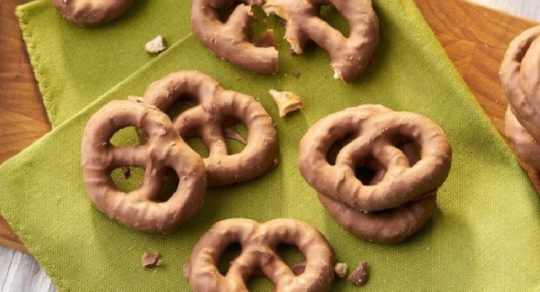

Did you know that you can use your Instant Pot to make desserts? This delicious key lime cheesecake uses six simple ingredients plus your Instant Pot (instead of the oven) for cooking! You’ll be able to enjoy the indulgent texture and taste of cheesecake but in a low-calorie version. Click here for the full recipe! >
[embedded content]
When it comes to simple, nothing quite beats “no-bake” desserts. With this recipe, you can whip up some delicious cheesecake bites with some simple mixing and freezing! The freezer will “set” the bites, which use healthy substitutes to traditional full-fat ingredients. With low-fat cream cheese, nonfat plain Greek yogurt, medjool dates and raw almonds, these bites are packed with goodness. Click here for the full recipe! >
Spring calls for pretty pastries and satisfying sweets! These berry scones are perfectly portioned and packed with berrylicious flavor. Featuring a whole wheat base, a medley of your favorite mixed berries and a sprinkle of coconut sugar, this healthy spring scone recipe provides the crumbly texture and light sweetness of scones that you know and love. Click here for the full recipe! >
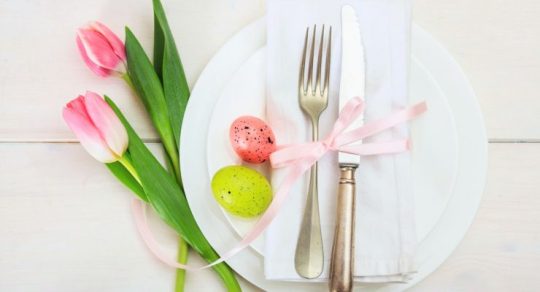

Delicious, dainty and diet-friendly, these little meringue cookie bites are the perfect dessert for your spring menu. They might look (and taste) like they’re straight from the local bakery but are actually quite simple to make. Serve them up on a colorful plate with fresh berries for a spring-inspired presentation. Click here for the full recipe! >
Who says you need flour to bake a moist, fluffy and delicious cake? Our recipe for Flourless Chocolate Raspberry Cake proves that you can create an impressive spring dessert with just five ingredients. Nutrisystem NutriChocolaty Wafers give this cake big chocolate flavor while keeping them diet-friendly. Click here for the full recipe! >
Enjoy an elegant chocolate dessert that’s filled with fresh, fruity flavor. This simple Raspberry Chocolate Mousse Pie is a rich and decadent treat that’s perfect for any special occasion. Top it with some low-fat whipped topping and sliced berries for a beautiful presentation. Click here for the full recipe! >


This berrylicious pie might look like a gourmet dessert from your local bakery. However, it’s actually super simple to make! The secret ingredient is chia seeds, which provides extra fiber while creating a jelly-liked texture. This beautiful blueberry baked good is essentially to spring and summer dessert menu. Click here for the full recipe! >
These delicious Skinny Mint Chocolate Brownie Bites make some simple ingredient swaps to create a Nutrisystem-approved treat. Say goodbye to sugar-filled candy! These little mint and chocolate bites feature a wholesome crust and a creamy mint filling made from avocado, nonfat Greek yogurt, coconut oil, honey and mint extract. They are perfect for your spring celebrations (Hello, St. Paddy’s Day!). Click here for the full recipe! >
Satisfy your homemade pie cravings without mixing, kneading or rolling any dough! Crisps and crumbles are ideal for all of the lazy cooks out there because they eliminate the most complicated step: pie dough. This easy raspberry spring dessert is made even easier with everyone’s favorite countertop appliance: the air fryer. Click here for the full recipe! >
Enjoy the flavors of carrot cake in a perfectly portioned muffin cup. This easy recipe is made with whole wheat flour, stevia and fresh-cut, nutrient-dense carrots. Feel free to add some raisins for even more sweet flavor. They are delicious with a cup of hot tea and could easily double as breakfast or brunch. Click here for the full recipe! >


source https://wealthch.com/22-easy-and-healthy-spring-dessert-recipes/
0 notes
Text
Easy challah bread
Easy to make enriched bread, with a hint of sweetness

Nothing beats the smell of freshly baked bread, right? Right. At least, not in my books. A close second is the smell of onions and garlic frying, but bread – still takes the first spot. I would say it takes the cake, but cake is another story altogether, so let’s not mix our metaphors today.
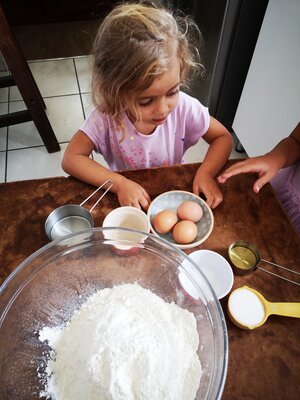



Baking. It seems to be the current favourite past time of the entire world population. Anyone and everyone are baking, anything from banana bread to traditional sourdough. I don’t think there are many homes who are not boasting about their potato-plant sourdough (we don’t have one. I feel so left out). But I did give in over Easter, baking this beautiful bread for the family to enjoy with a cup of tea. The kids “helped”, of course, although they were a bit miffed that they had to wait so long for it to rise. And then do a second proof. But in the end, they enjoyed it and they didn’t complain about it again. So obviously no permanent damage was done.
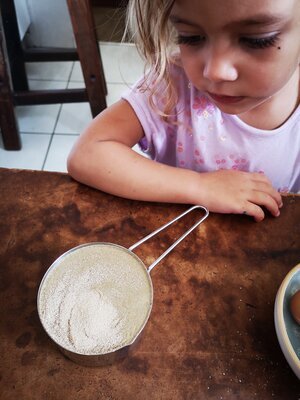
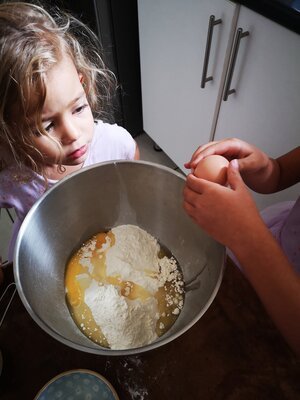
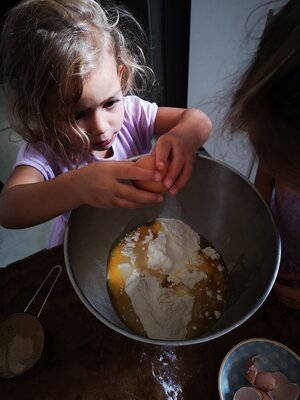
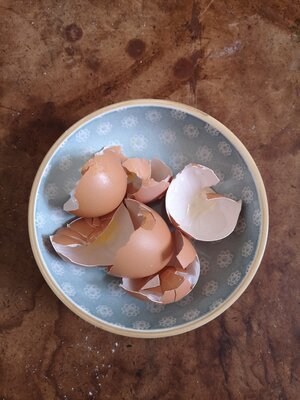
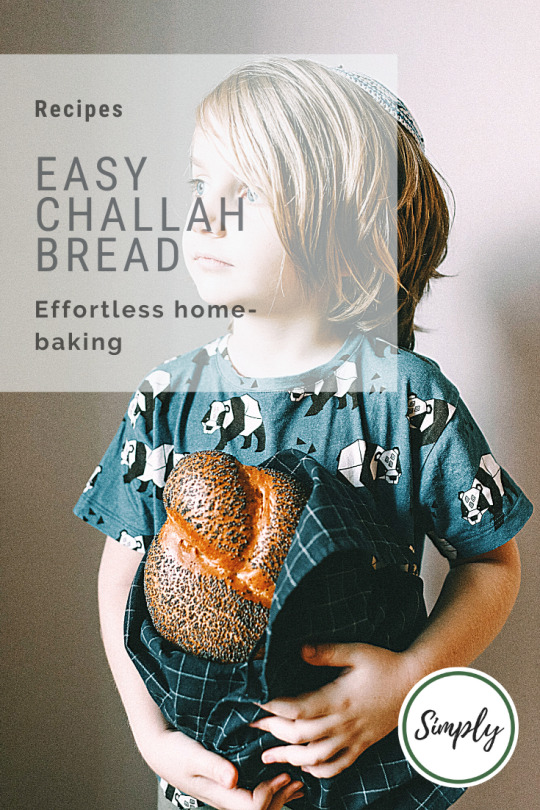


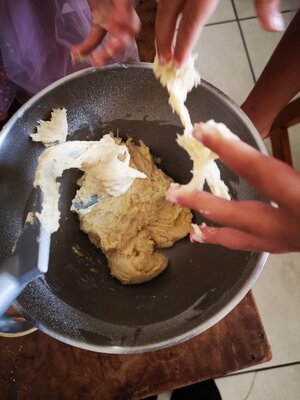
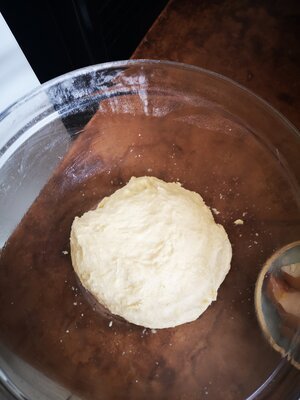
Easy challah
In short, challah is a very easy and straightforward bread to make. The dough is enriched with eggs and oil, while a bit of sugar adds some sweetness. It doesn’t require any fussy techniques and can be made from start to finish in the space of an afternoon. If you don’t want to do the traditional braiding, you don’t have to. simply form a loaf and bake it like that.
Mine came out a bit misshapen, courtesy of all the “help” I received

Have you been toying with the idea to start meal planning but don’t know where to start? Then sign up for the month-long meal planning email series! You will get a weekly email with the week’s recipes, shopping list as well as prep list. Enroll here
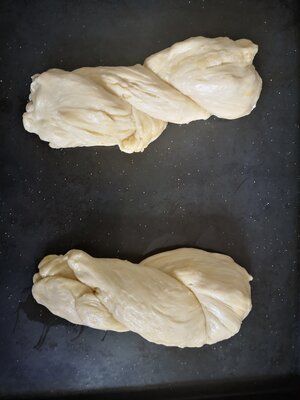
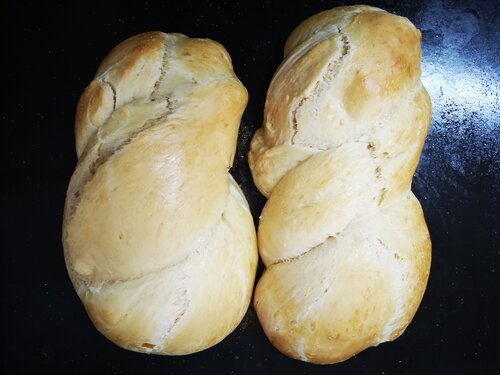
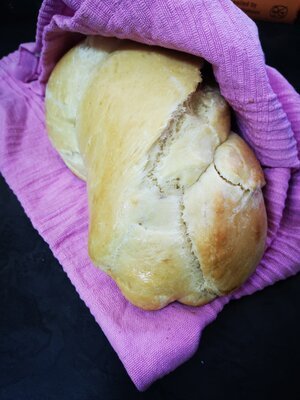
Easy Challah
Esrida Brits | 25 May 2020
Very easy
prep time: 2 hours
cook time: 30-35 min
total time: 2 hoours, 30 min, give or take
Servings: Makes 2 braided loaves
Ingredients:
1 cup (250ml) lukewarm water
2 teaspoons (30ml) active dry or instant yeast
4 to 4 1/2 cups all-purpose flour
1/4 cup granulated sugar
2 teaspoons (30ml) salt
2 large eggs
1 large egg yolk (reserve the white for the egg wash)
1/4 cup neutral-flavored vegetable oil, such as canola
Instructions:
Place the water in a small bowl, sprinkle with the yeast and a healthy pinch of sugar, and stir to combine. Let stand until you see a thin frothy layer form on the top, 5 to 10 minutes. This means that the yeast is active and ready to use. (If you do not see this or if your yeast won’t dissolve, it has likely expired and you’ll need to purchase new yeast.)
Place 4 cups of the flour, sugar, and salt in the bowl of a stand mixer and whisk to combine. (Alternatively, use a large bowl and knead by hand.)
Make a well in the center of the flour and add the eggs, egg yolk, and oil. Whisk to form a slurry, pulling in a little flour from the sides of the bowl.
Pour the yeast mixture over the egg slurry. Mix the yeast, eggs, and flour with a wooden spoon or rubber spatula until a shaggy dough that is difficult to mix forms.
Knead the dough for 6 to 8 minutes. Fit the mixer with the hook attachment and knead on low speed for 6 to 8 minutes. (Alternatively, turn out the dough onto a floured work surface and knead by hand for about 10 minutes.) If the dough seems very sticky, add flour a teaspoon at a time until it feels tacky, but no longer like bubblegum. The dough has finished kneading when it is soft, smooth, and holds a ball-shape.
Place the dough in an oiled bowl, cover with plastic wrap, and place somewhere warm. Let the dough rise until doubled in bulk, 1 1/2 to 2 hours.
Divide the dough into 3 or 6 equal pieces, depending on the type of braid you’d like to do. Roll each piece of dough into a long rope about 40cm long. If the ropes shrink as you try to roll them, let them rest for 5 minutes to relax the gluten and then try again.
Gather the ropes and squeeze them together at the very top. If making a 3-stranded challah, braid the ropes together like braiding hair or yarn and squeeze the other ends together when complete.
Line a baking sheet with parchment paper. Place the braided loaf on top and sprinkle with a little flour. Cover with a clean kitchen towel. Let rise in a warm place away from drafts until puffed and pillowy, about 1 hour.
About 20 minutes before baking, arrange a rack in the middle of the oven and heat to 180°C. When ready to bake, whisk the reserved egg white with 1 tablespoon of water and brush it all over the challah. Be sure to get in the cracks and down the sides of the loaf.
Bake, rotating the baking sheet halfway through, until the challah is deeply browned and cooked through.
Let the challah cool on a cooling rack until just barely warm. Enjoy!
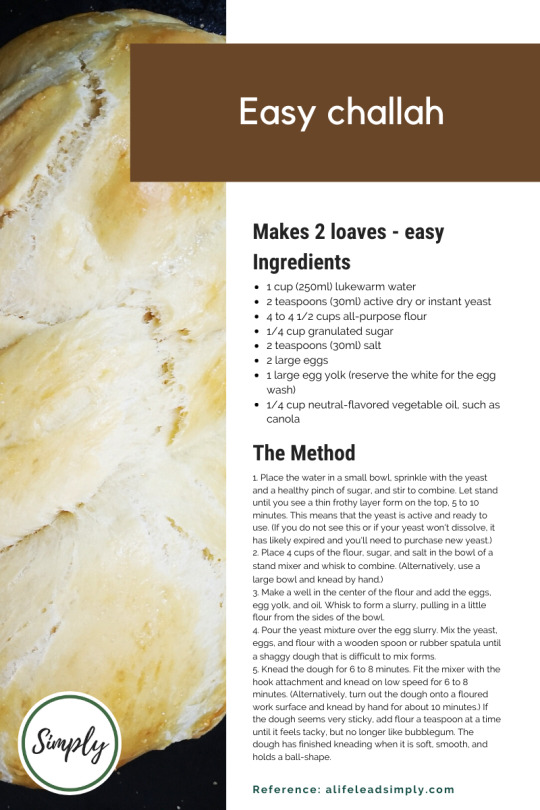

This bread is delicious. If you are acquainted with Afrikaans culture, challah is close to mosbolletjies in taste and texture. And just as easy to make. So give it a try!
Stay safe!
See you soon!
xoxo
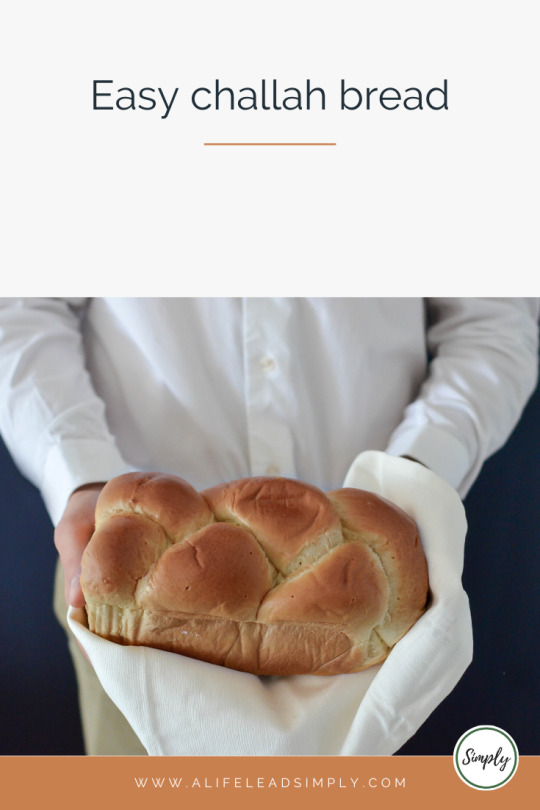

from WordPress https://ift.tt/3ekm4zo
via IFTTT
0 notes